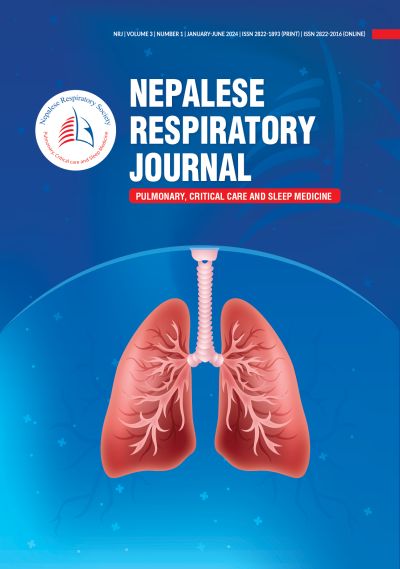Comparison of Asthma Control Test and GINA based assessment in Nepalese population: A cross-sectional study
DOI:
https://doi.org/10.3126/nrj.v3i1.69213Keywords:
Asthma, Asthma Control Test, Bronchial Asthma, GINA Assessment of Asthma Control, NepalAbstract
Introduction: Asthma has a high age adjusted mortality in low- and middle-income countries like Nepal, which is preventable. Asthma control test (ACT) and GINA based assessment are the two most used tools to monitor effectiveness of the treatment. Utility these tools have not been evaluated in patients with asthma in Nepal.
Objective: This study aims to compare the agreement between ACT and GINA assessment tools in Nepalese population.
Methods: In a cross-sectional observational study, patients aged more than 18 years diagnosed as asthma at least three months prior were included. Active smokers and those with concomitant other respiratory disorder were excluded. ACT translated to native Nepali language was self-administered by the patient. GINA assessment of asthma control was recorded by the physician. Patients were classified as having well controlled, partially controlled and poorly controlled asthma by using both the tools. Spearman’s correlation coefficient was used to evaluate the agreement between the ACT and GINA based classification.
Results: A total of 56 patients were included into the study. The mean age was 39 ± 12 years and the median duration of symptoms was 39.5 (IQR = 25.5-53.5) months. Using the GINA recommended asthma control tool, the number of patients with well controlled, partially controlled and poorly controlled asthma were 21 (38%), 24 (43%) and 11 (20%) respectively. Using the ACT scores, 35 (63%), 11 (20%) and 10 (18%) patients had well, partially, and poorly controlled asthma respectively. Both ACT and GINA score had a good agreement in classifying poorly controlled asthma. ACT and GINA scores had a weak positive yet statistically significant correlation (Spearman’s rho= 0.752, p= 0.019).
Conclusions: ACT and GINA based assessment tools have good agreement to identify poorly controlled asthma in patients with asthma in Nepal.
Downloads
Downloads
Published
How to Cite
Issue
Section
License
© Nepalese Respiratory Society

This article is licensed under a Creative Commons Attribution 4.0 International License.




